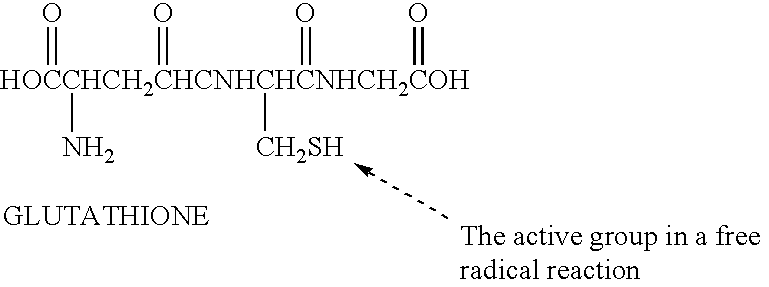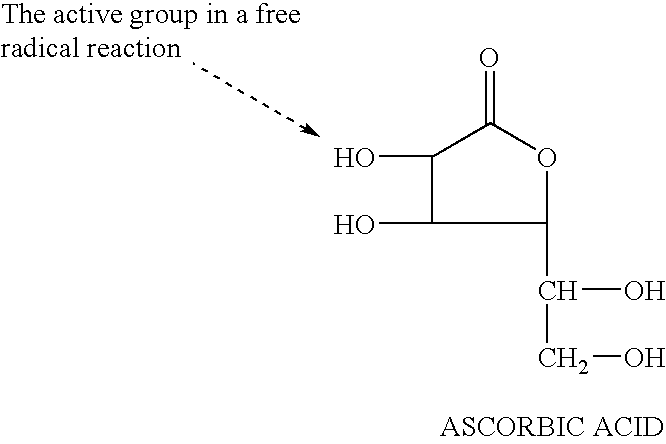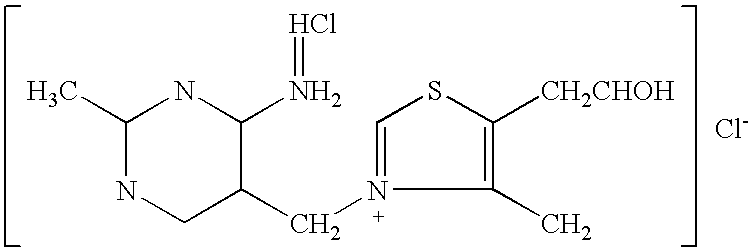Free radical quenching composition and a method to increase intracellular and/or extracellular antioxidants
a technology of antioxidant composition and free radical quenching, which is applied in the direction of drug composition, aerosol delivery, peptide/protein ingredients, etc., can solve the problems of lysis of liposomes, inability to appreciate the potpourri of different oxidants generated in various pathological conditions, and serious shortcomings in clinical settings
- Summary
- Abstract
- Description
- Claims
- Application Information
AI Technical Summary
Benefits of technology
Problems solved by technology
Method used
Image
Examples
example b
Preparation of Stabilized Liposomes Containing Antioxidants
The following illustrates encapsulation of amphiphilic or lipid-soluble antioxidants, as alternative to the encapsulation of water-soluble antioxidants as in Example A.
Twenty mg of PS (or other lipid or lipid mixture) are dissolved in 2 ml of methanol or chloroform / methanol (2:1), together with amphiphilic antioxidants. The solution is evaporated to dryness on a rotary evaporator under vacuum supplied by a water aspirator, then freed of residual solvent under high vacuum. Two ml of an aqueous buffer solution, 5 millimolar in TRIS or other buffer, at pH 7.5, are added. The rest of the procedure is as in Example A. The resulting liposomes now contain the antioxidants embedded in the lipid bilayer shells.
Dosages (g / kg for intravenous, aerosol, lavage, topical (e.g., optical) usages):
Trace metals could include 55-250 .mu.g / day of selenium; 10-1000 .mu.g / day of chromium; 4-40 .mu.g / day of manganese; 2-20 .mu.g / day of copper; 5-75...
example 1
Additive to Facial Moisturizers (refer to FIG. 13, also not Section on Burns)
Amphipathic antioxidants (AMAOX) may be added to an aqueous based moisturizer. The moisturizer may then be added to facial skin once or twice a day. This moisturizer may be also used as night cream. Since most of the lipids in skin are phospholipids, it would be expected that liposomes composed of phospholipids will be readily absorbed by cellular membranes. An increase in skin amphipathic antioxidants would be expected to decrease lipid peroxidation in the various layers of the skin. Free radicals have been implicated in the aging of facial skin due to the exposure to ultraviolet light.
example 2
(Refer to FIG. 13, also Note Section on Burns)
Application to Skin for Burn Wounds
Given a 25 year old male who sustains a 50% body surface burn wound. Once the burn wounds are debrided, a gel based vehicle containing AMAOX is applied to the entire surface of the areas of the burns. AMAOX is also administered for several days intravenously (twenty four hours per day). The application of AMAOX to skin which had sustained a serious burn wound would be postulated to decrease lipid peroxidation which takes place on the skin after burn wounds. Intravenous amphipathic antioxidants would maintain systemic levels of antioxidants, which is postulated to prevent or limit adult respiratory distress syndrome (which has been postulated as having free radicals as its pathogenesis), and assist in facilitating healing of the wounds.
PUM
| Property | Measurement | Unit |
|---|---|---|
| weight | aaaaa | aaaaa |
| pH | aaaaa | aaaaa |
| diameter | aaaaa | aaaaa |
Abstract
Description
Claims
Application Information
 Login to View More
Login to View More - R&D
- Intellectual Property
- Life Sciences
- Materials
- Tech Scout
- Unparalleled Data Quality
- Higher Quality Content
- 60% Fewer Hallucinations
Browse by: Latest US Patents, China's latest patents, Technical Efficacy Thesaurus, Application Domain, Technology Topic, Popular Technical Reports.
© 2025 PatSnap. All rights reserved.Legal|Privacy policy|Modern Slavery Act Transparency Statement|Sitemap|About US| Contact US: help@patsnap.com



